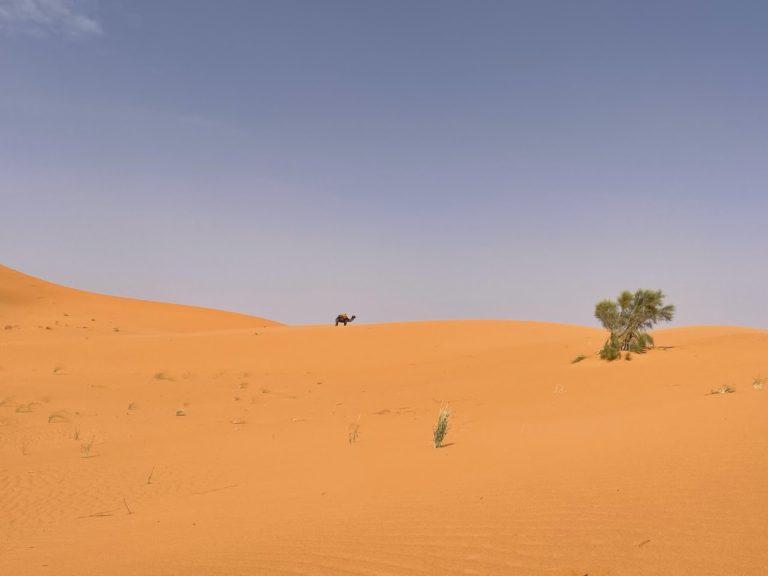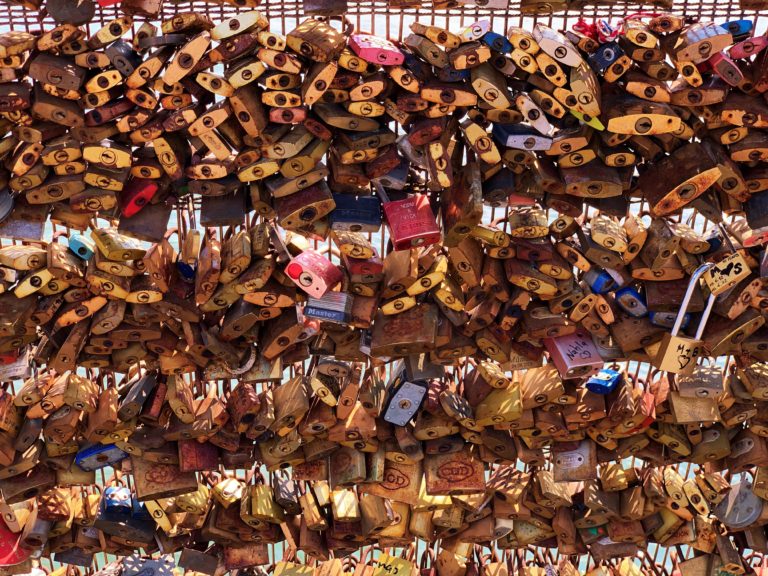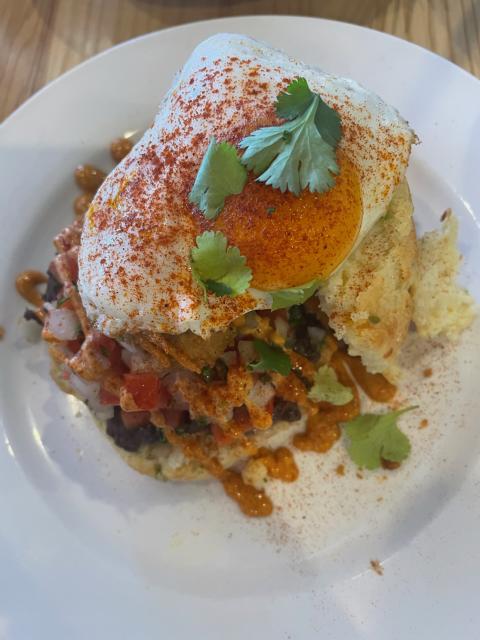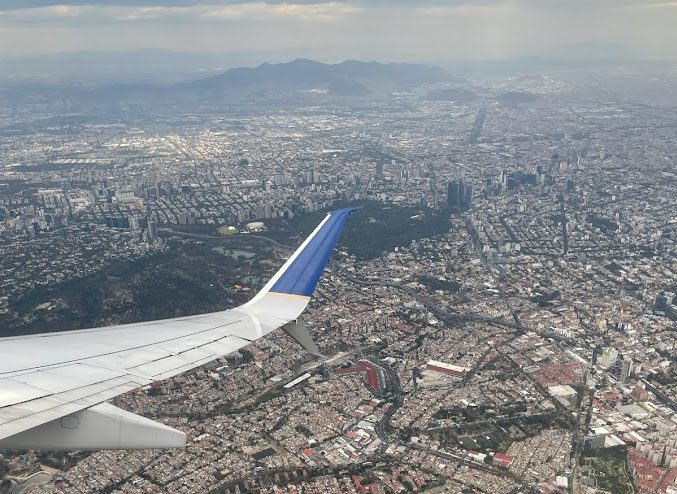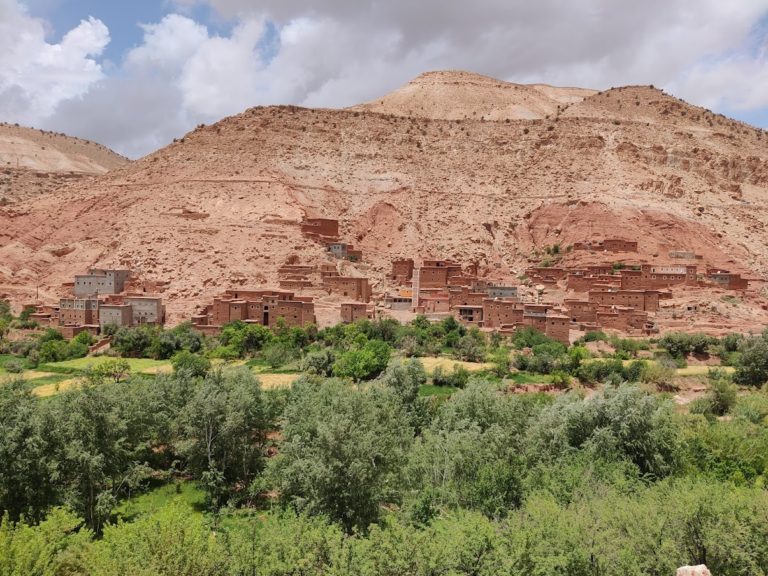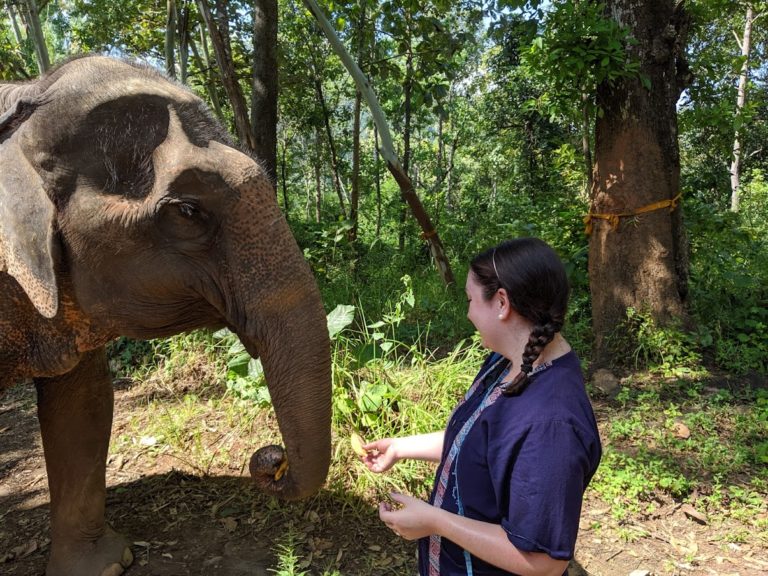The Best Way to Explore Wineries in Spain with a Local
“El que al mundo vino y no toma vino, a qué vino?” – Bernardo Piuma.
I still don’t know who this Bernardo Piuma guy is (if you know, please share), but he’s on to something here. This famous and popular Spanish motto declares, “He who comes to this world and doesn’t drink wine, why did he come?” Can’t say I disagree! When it comes to wine in Spain, it’s innately woven into their culture. That said, exploring the wineries in Spain with a local is one of the best ways to get a peek into Spanish culture and life.
But in many cases, the wineries in Spain aren’t set up the way they are in the United States. Most you have to schedule your visit in advance. You don’t pop up with your picnic basket and blanket and spread out to enjoy hours under the sun, sipping away. That’s why I personally think going on day tours led by locals who have cultivated relationships with the families and proprietors running the vineyards is the best option. You will see so much more and learn so much more than you would on your own!
Today, I’m sharing two that we’ve absolutely loved and would highly recommend!
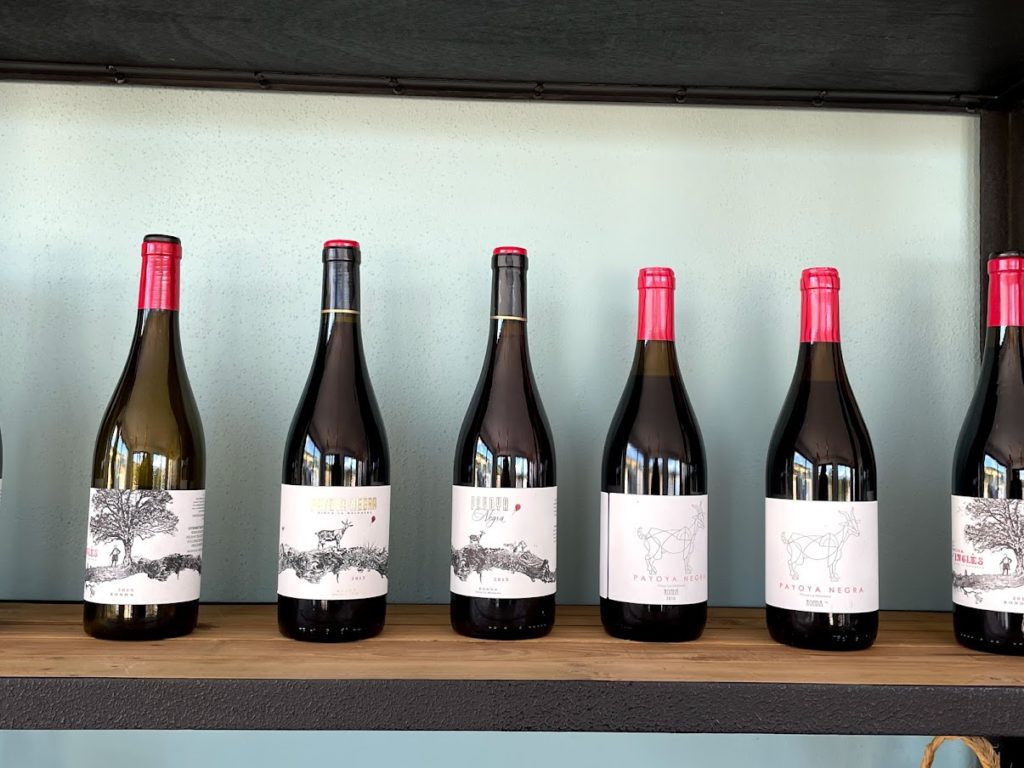
Southern Spain Wine Tour from Marbella: Rootz Wine Tours
When we went to Southern Spain, I mistakenly assumed that the only wine that was really produced there was Jerez aka sherry. And I have to be honest, I’m not a big fan. It’s too sweet, too strong, and just not my cup o’ tea, er, wine.
So, when I started searching for wine tours during our most recent trip to Malaga and Marbella in 2021, I wasn’t optimistic that I’d find a tour that interested me. That was until I stumbled across Rootz Wine Tours. Boy am I glad I did! This incredible woman-owned and operated wine tour company is led by Nicky Lloyd, a British expat who has lived in Southern Spain for many years.
The Tour: Ronda Triple Vineyard Taster
The tour we ended up choosing with Nicky was the Ronda Triple Vineyard Taster. It started bright and early in the morning. Right after a quick, carb-heavy breakfast and a caffeine fix we were ready to taste some vino!
The cobblestone streets in the Marbella historic center are pretty impossible to drive on. So, she picked us up about a 10-minute walk from our hotel which worked out perfectly. Upon arrival, she opened the doors and I felt an icy cold burst of air on my face. I nearly cried tears of joy. Our hotel gave us an awful room with no exterior windows and no functioning air conditioning. This means we’d been slowly roasting in the late-summer Spanish heat for days at that point. I literally would have preferred to sleep in that van over my hotel room. No exaggeration.
Safe to say, we were super comfortable the entire day!
Pro Tip: Winding Roads -> Take Your Dramamine
While it was comfortable, for those who get motion sickness, take a Dramamine before hopping in the van. The roads winding up the mountains taking you from Marbella’s sea-level streets to the mountaintop city of Ronda (hovering at about 2,500 feet) are no joke. I personally love the ginger pills; they work just as well and no fatigue whatsoever. Plus, it’s probably better to mix wine and ginger than wine and meds I would assume? That’s just my very non-medical opinion.
After about an hour and a half of climbing up to Ronda, we arrived at stop numero uno.
First Stop: La Melonera
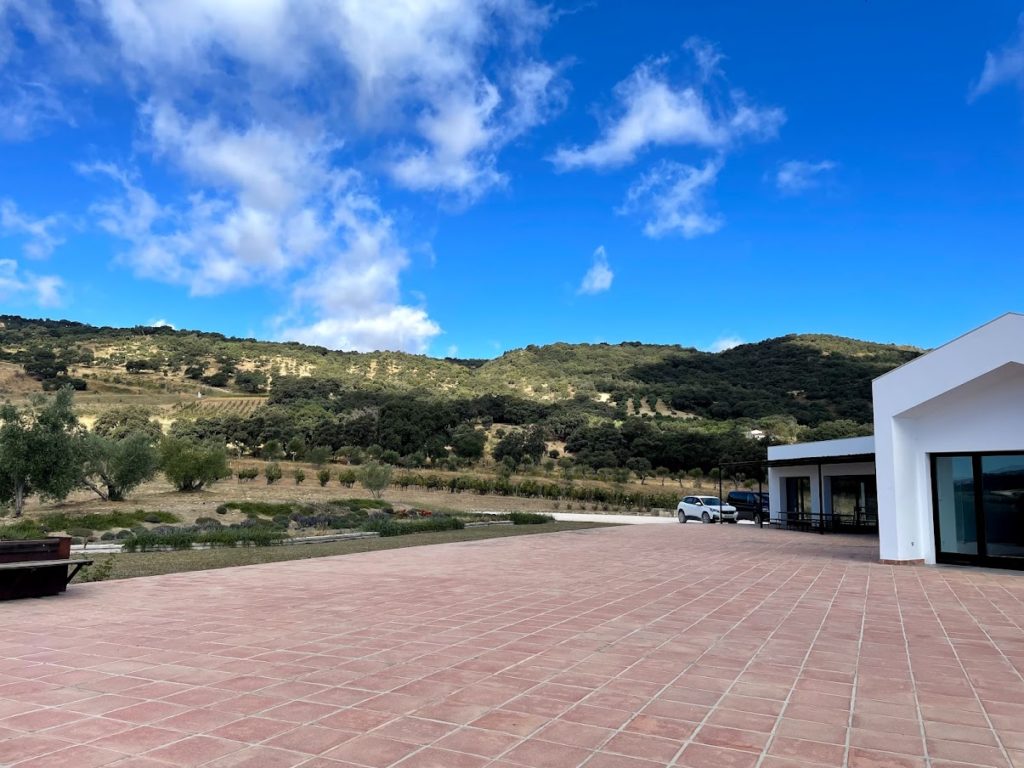
The architecture of La Melonera is nearly as impressive as their wine. As you emerge from the rustic dirt roads leading you to this winery, all of a sudden, a magnificent modern white building starts to appear on the horizon.
This spot is an oasis in the hills surrounding Ronda. As you look out off their patio you can soak in views of the white-washed city of Arriate below. In fact, they’re creating their own little community of privately-owned haciendas, each with its own vines. Part of the deal is that you allow La Melonara to use some of the grapes. But, they’ll bottle your unique varietal for just your family to enjoy each year as well. I told my husband it should be our life goal to buy one. Can you imagine having your own vineyard? One that you don’t have to tend to or care for, but you get to reap the boozy benefits? Yes, please! They may be millions of bucks, but hey, a girl can dream!
The vineyard’s goal is to revive and restore the local grape varietals that nearly went extinct in the 19th century from the phylloxera (an invasive insect species) plague. This put a stop to winemaking in Ronda for nearly a century and it’s why a lot of the vineyards in this area are younger than other parts of Spain.
We started in the tasting room where Nicky got us set up with some snacks and three of their wines. They were so good we couldn’t choose a favorite. But if we had to choose it would probably be the only white we tried, La Encina del Inglés.


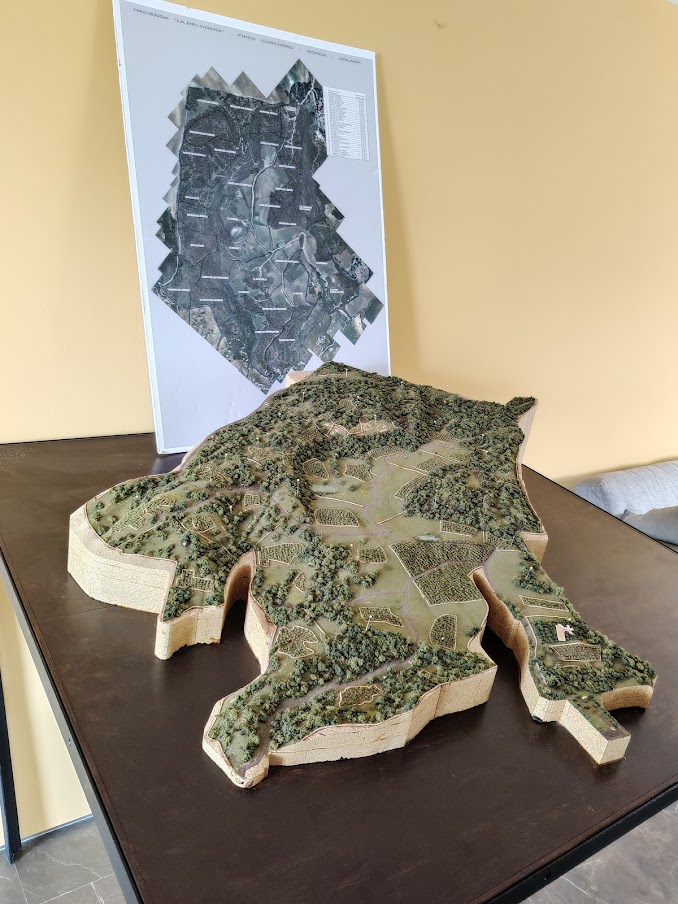
The winery itself is simply stunning. Throughout the building the design is impeccable, and its floor-to-ceiling windows allow you to soak in the natural surroundings.
The highlight of this stop though was getting to see the production process in action. Our tour was on September 8th, so it was peak grape harvesting season in Spain. A group of employees was sorting through buckets of grapes that had been picked that morning. Their job is to rid the haul of any that looked bad. Then, a conveyor belt took the good grapes to a de-stemming contraption. The machine de-stemmed the grapes and spit them into a vessel attached to a tube. The grapes then travel from the tube, straight into the wine tanks for fermentation. It was so neat! Here’s a video that shows a quick snippet of the process if you’re interested. The production space is actually underground beneath the main building to ensure it stays cool throughout the year.
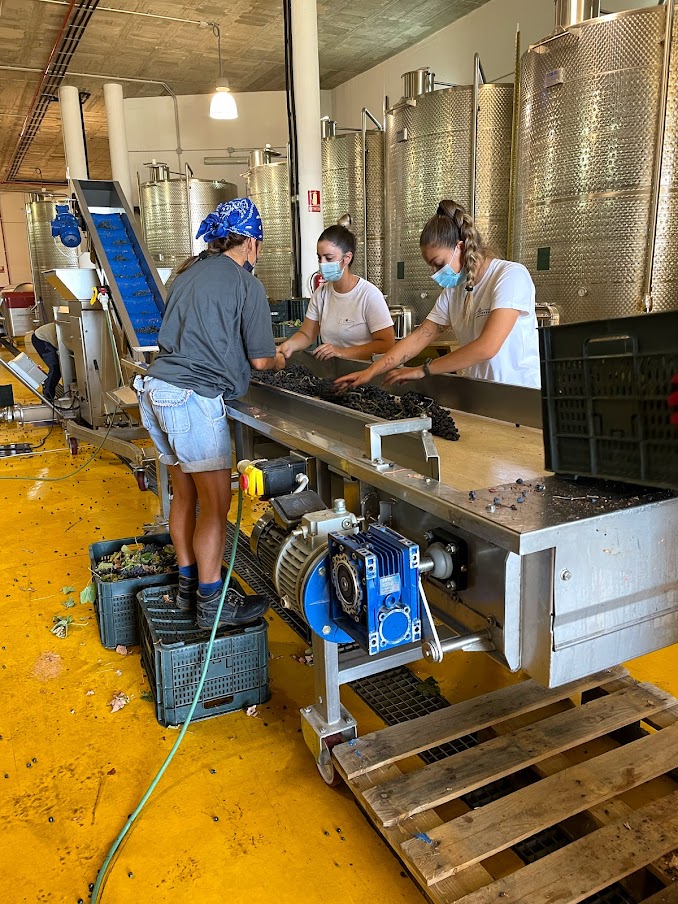
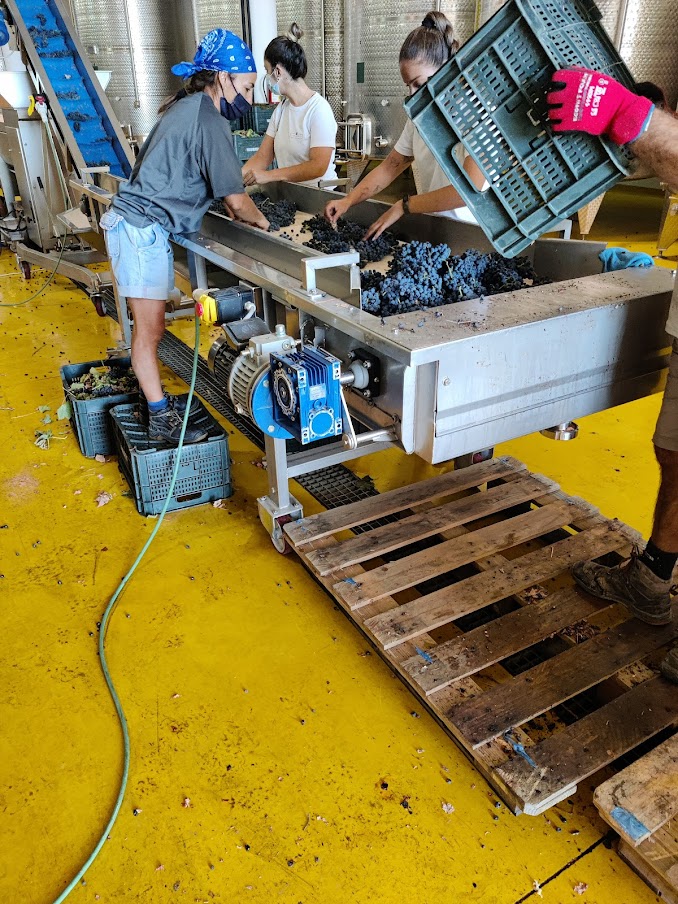
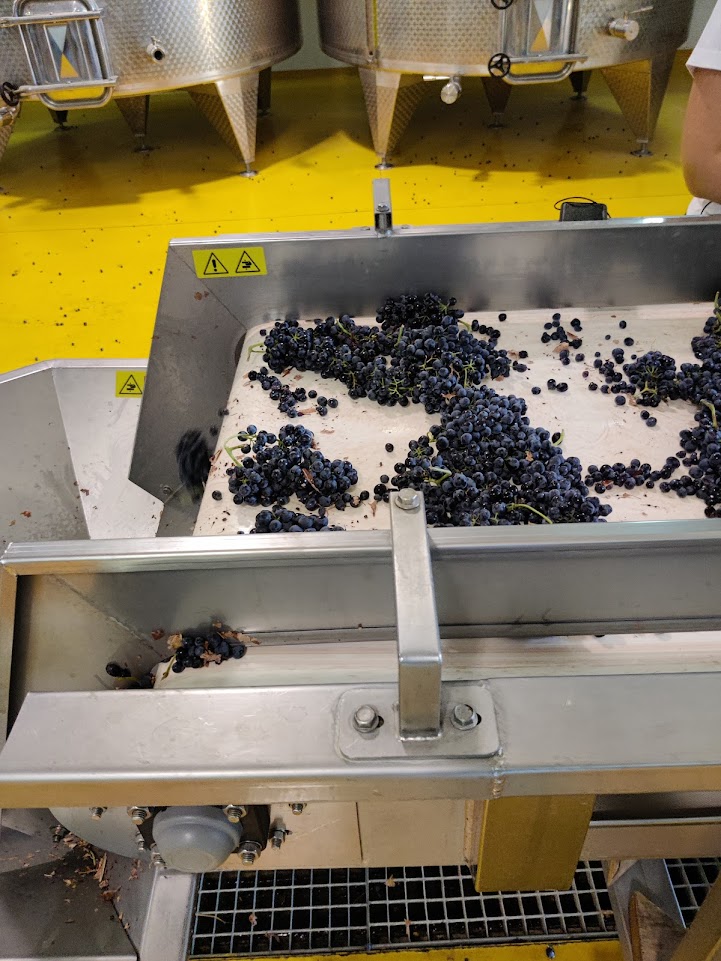
After this, we got to peek at their barrel room, and we were off to the next stop.
Second Stop: Bodega Kieninger
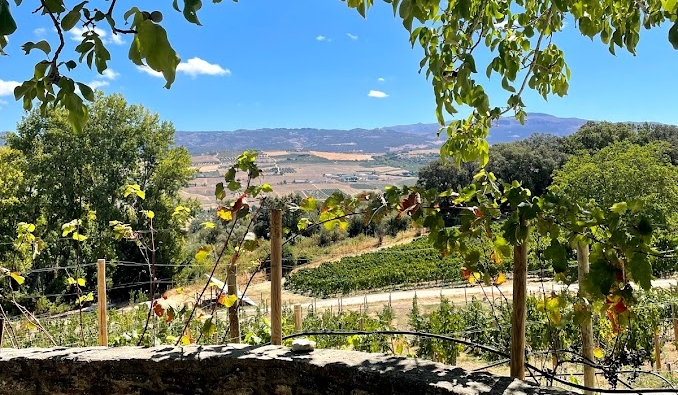
Next, we drove about 400 feet to the left and came across this spot! It was so interesting to see how a super industrial and modern vineyard like La Melonera sits right next to a rustic and charming vineyard like Bodega Kieninger. Seeing the contrast is really unique. But the wine is just as delicious regardless of the ambiance!
As a dog mom who loves all furry friends, this was the best winery in my opinion. Why? They have vineyard dogs, Blanco and Rocco, who followed us around all afternoon long. But even more than that, it’s truly a family affair.
The vineyard was founded by Martin Kieninger, an Austrian who moved to Ronda to get away from the family business and pursue his own dreams. Ultimately, in the early-2000s, after trying his hand at growing vines for fun, he took a step towards turning his passion into a career and started cultivating the vines using organic, ecologically friendly practices with zero pesticides. They continue these practices to this day, producing organic wine that’s good for the environment and natural symbiosis.
Their production is quite small, around 10,000-15,000 bottles. But each bottle is lovingly and painstakingly labeled, corked, and sealed with wax by the family and their employees. Martin’s daughter designs all the labels and his wife, Ana, was actually the one to show us around the property!
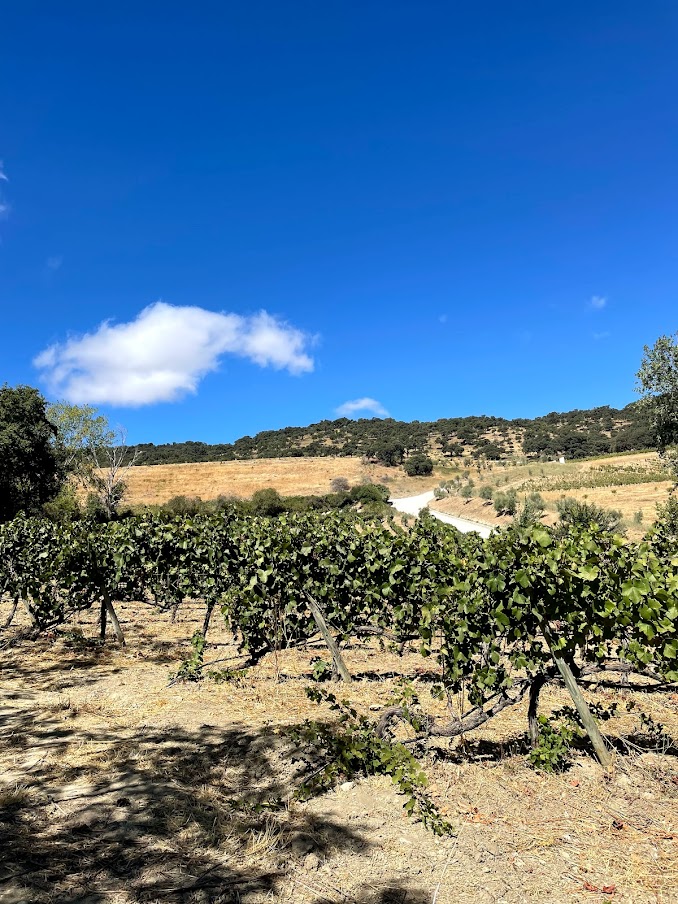
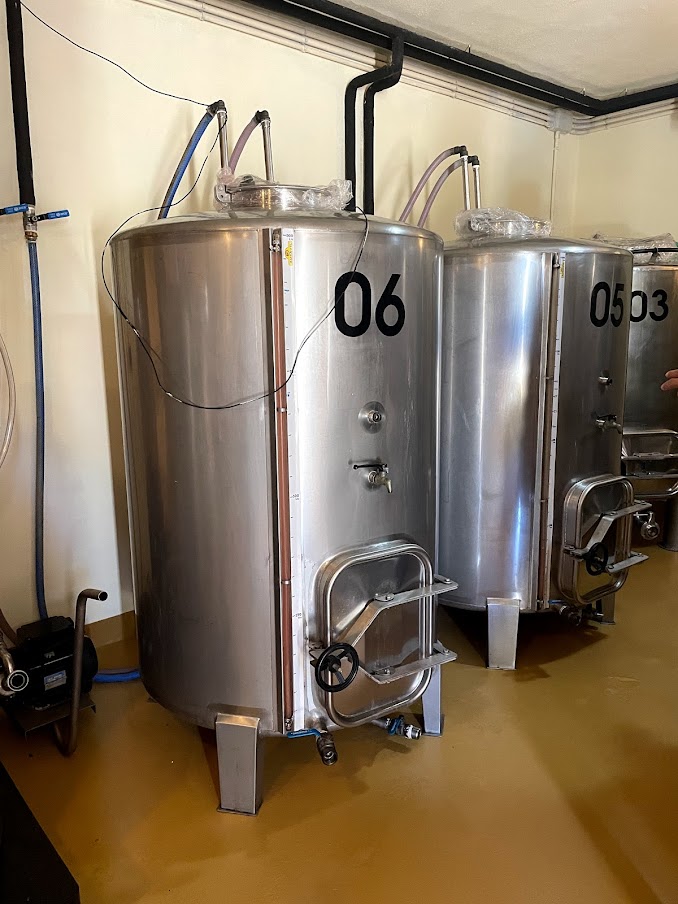

Upon arrival, we got a tour of the production space, the barrel room, and then it was off to explore the grounds. They are home to over 4,000 varietals of local Andalucian grapes like Tintilla de Rota, as well as imported grapes from Austria and France like Zweigelt, sitting on just over 3 hectares which is about 7.5 acres. While we wandered, we picked fresh grapes that were getting ready to be harvested to give them a taste and came across all sorts of fruit trees. Trying fresh figs off the tree was definitely a highlight of the entire day. They are succulent, slightly sweet, and taste absolutely nothing like the chalky ones you get in an American grocery store.
Since it was harvest time, Ana shared with us that the workers typically arrive in the wee hours of the morning to pick the grapes before they get too hot, otherwise, it will impact the fermentation process and the taste of the wine. This too, they do all by hand.
Then, it was time for lunch. Ana whipped up a tasty tapas spread, which we enjoyed over great conversation, delicious organic wine, and spectacular views of the surrounding Serranía de Ronda mountain range. Looking to the side of the table, I saw Blanco nibbling on whatever was falling off the tree above us. Turns out, it was a walnut tree and he’s learned how to crack the walnuts for a perfect afternoon snack. Too cute!
Everything they do at Bodega Kieninger is a labor of love, and they really keep it in the family. It is so special to see what they’ve built together and how their passion has become their livelihood!
Third Stop: Bodegas Conrad
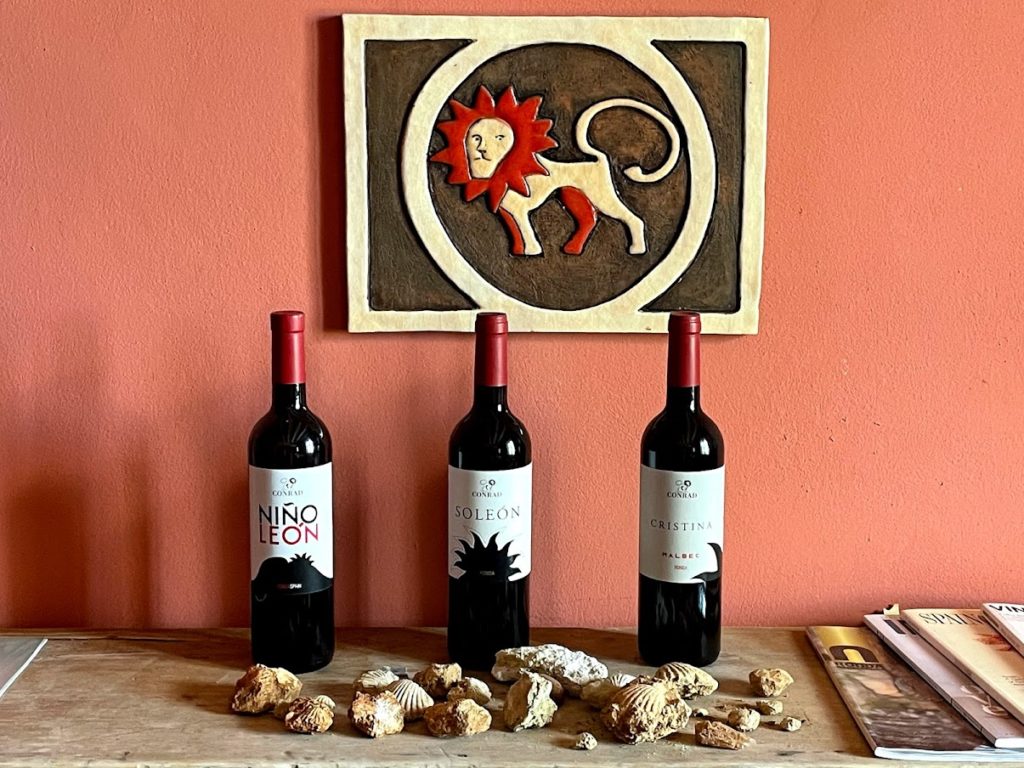
Last but not least, we arrived at a striking red hacienda-style building, home to Bodegas Conrad. As it’s a little farther out than the other two vineyards, located at the base of the Sierra de las Nieves the soil is completely different than the other two vineyards. It’s more gritty, chalky, and rocky almost. This lends itself to a more mineral-first taste.
Before tasting the wines, we went down to the cellar where they have all their French oak barrels aging the wine. They had a really cool room that had alcoves for each vintage for each year they’ve been producing. Many people will apparently come and purchase a certain vintage for a celebration, with special meaning behind the year they choose. They’re a part of their community, and you can tell from the moment you arrive which was the highlight for me!
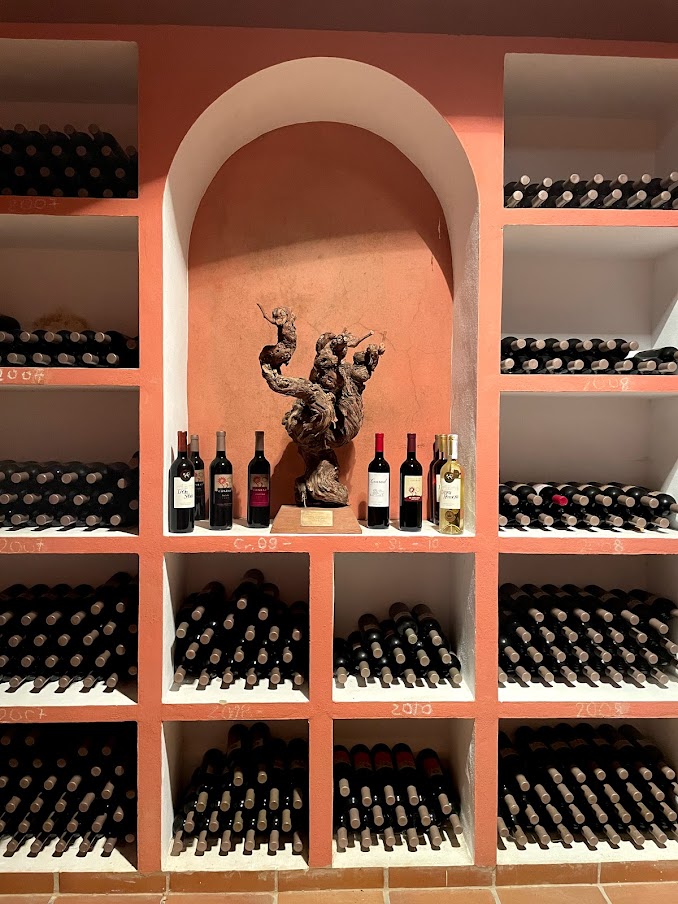
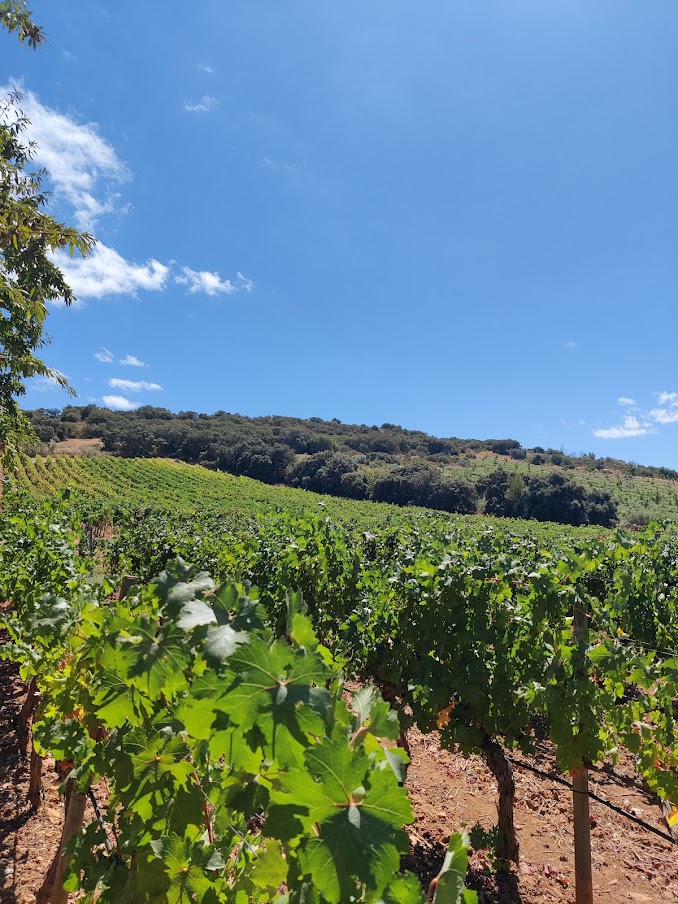
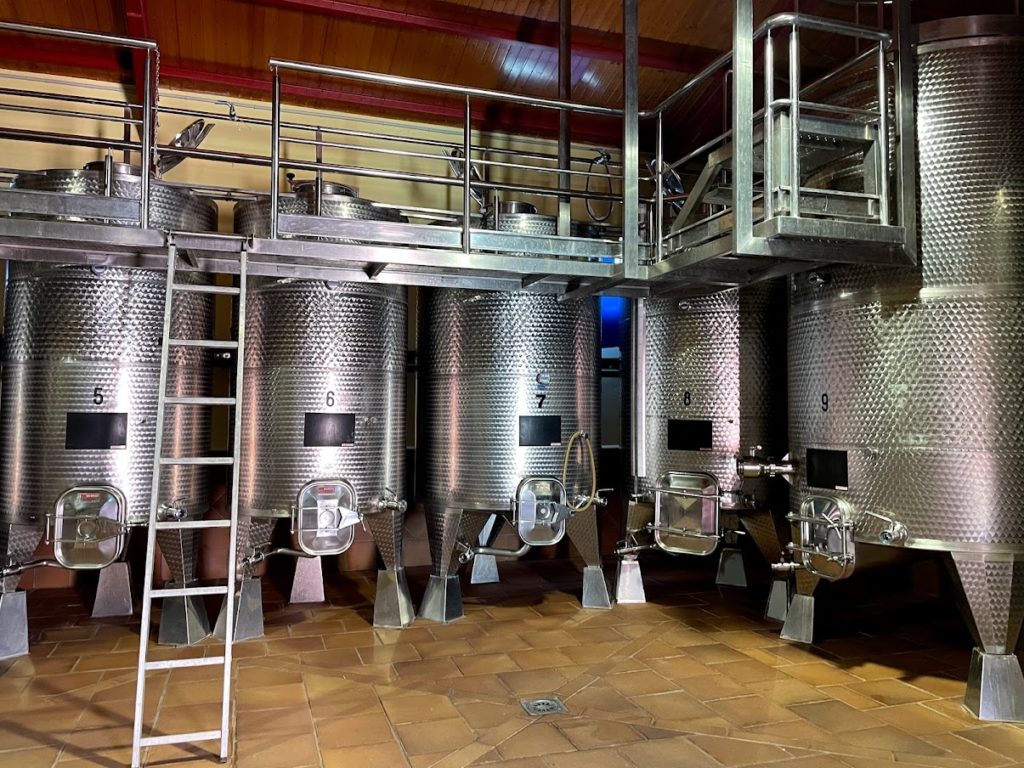
The one thing that all wineries in Spain have in common is their commitment to creating wines that feature the unique terroir of their vineyard and its beautiful, lush, natural surroundings. You’ll see their passion for viticulture shine through instantly!
There is no better way to see wineries in Southern Spain than a tour with Nicky and Rootz Wine Tours!
Pro Tip: Wear Sneakers
I wore my prized Jack Rogers sandals because I wanted to look cute for Spanish winery photos. Bad choice, friends. Just don’t do it. Comfort over cuteness any day. You’re going to be wandering through the vines at each vineyard and treading over squished discarded grapes in the production room (if you go at harvest time like we did). Save the nice shoes for another time!
I already know that next time I’m in Malaga and want to visit more wineries in Spain, I’ll be back for more of Nicky’s knowledge and connections with another tour. She offers so many options leaving from many Costa del Sol towns. You can even do a winemaker’s lunch to really dive into the nitty-gritty details of Spanish winemaking at some of the best wineries in Spain!
Northern Spain Wine Tour from Madrid: Gourmet Madrid
The number of wineries in Spain is insane. Close to 4,500 in fact. There’s no way you’ll cover even a small portion of the wineries in Spain during your trip. That said, there are so many wine tours around Madrid, it was hard to choose. Ultimately, we went with Gourmet Madrid due to their reviews and the reasonable price.
The Tour: Madrid Wine Tour
While we booked a small group tour, there were five of us traveling and we ended up being the only ones on the Madrid Wine Tour that day. A private tour for the price of a group tour? Yes, please!
Now, full disclaimer, we did this tour a few years ago before this blog, so my stories and memories are not quite as vivid. But years later, I still say this is the best thing we did on that specific trip to Spain! Ready for the short and sweet highlights?
Our guide met us outside a coffee shop near Atocha Train Station, a simple landmark to find even for those new to Madrid. We got a quick coffee and were on our way in a cozy sprinter van. Each spot included a tasting with some local snacks like Manchego and bread, literally my two favorite things in the world.
First Stop: El Regajal
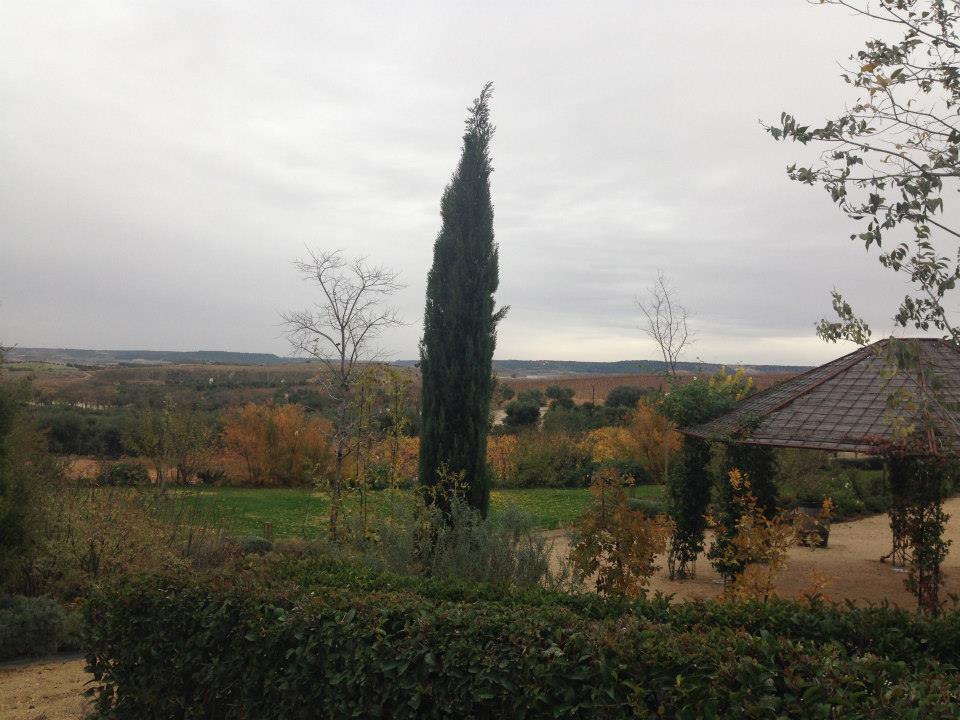
The drive from Madrid to Aranjuez where you’ll find El Regajal is just under 45 minutes and really picturesque as you transition from the big city to small little Spanish towns with their white-washed buildings and terra cotta roofs.
This special winery welcomes you with a beautiful, tiled courtyard out front, but the magic happens inside. The highlight of this stop was visiting the dark barrel room and getting to try a bit of wine right from the cask. From there, we went to the tasting room to enjoy a few of their most recent varietals. After the tasting, we decided that El Regajal Selección Especial was our favorite wine, and we still talk about buying a case from time to time to this day!
Second Stop: Bodegas del Real Cortijo
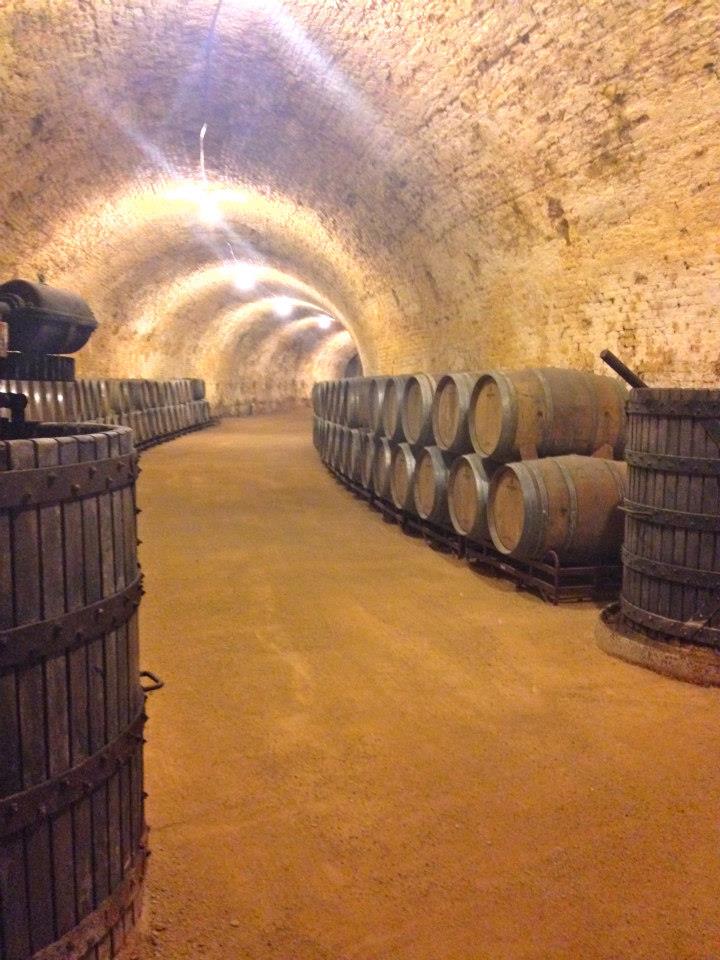
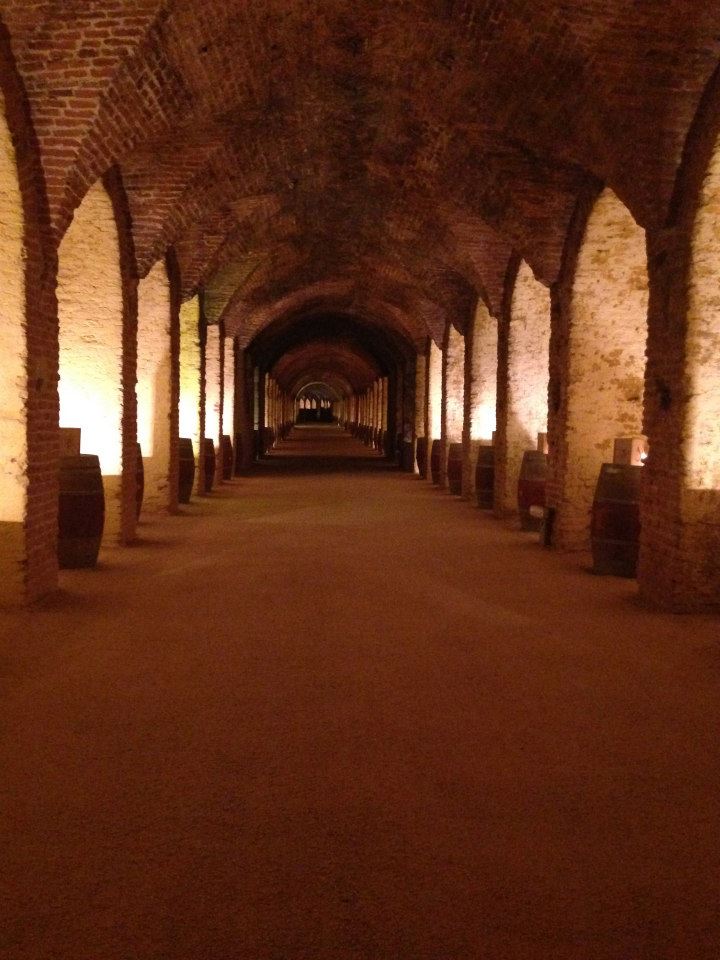
This stop was the most impressive in terms of architecture. When you pull up, you find rather stately gates that give more of a palatial impression than that of a vineyard. And in fact, that’s for good reason. This one-of-a-kind winery was started by Carlos III in the late-1700s and was the wine supplier for the royal house for nearly two centuries. What makes it even more interesting is that it was built underneath the Royal Estate of San Isidro, making it the only subterranean winery like it in the world. It’s actually a historic monument!
As you walk through the entrance, you’re greeted by a long dark hallway with arches uplit with sconces to feature wine barrels and thousands of bottles of historic vintages as you walk along the path. Apparently, it runs for nearly half a mile in its entirety.
This is a stop that should not be missed!
Third Stop: Bodegas Peral
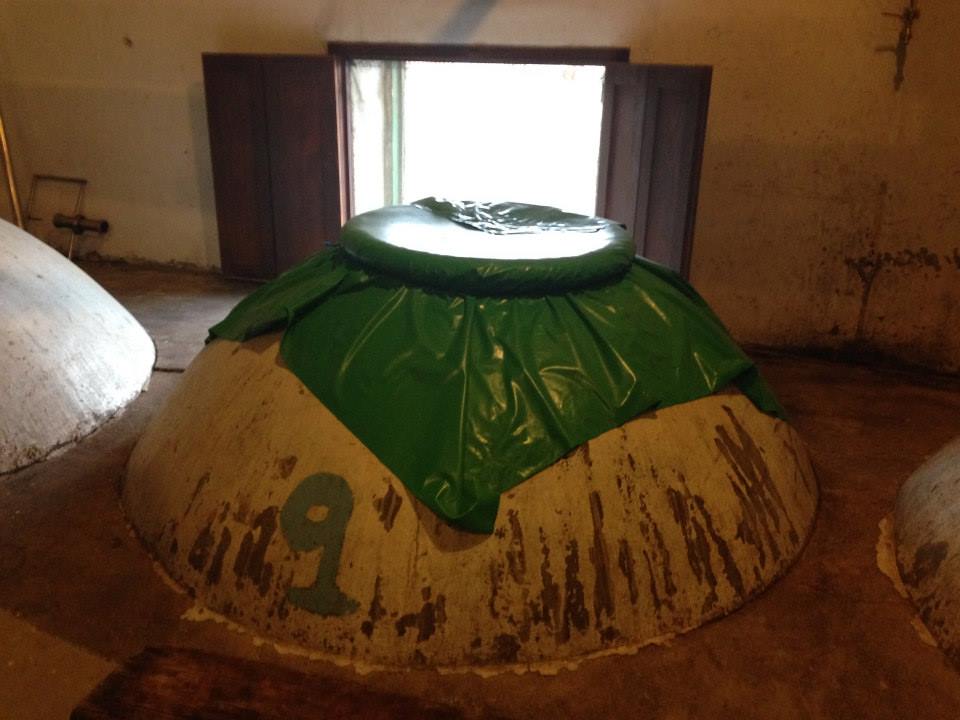
Last but not least was Bodegas Peral. Their fermentation process was unique from the rest. When we first got there, we climbed into a fermentation room that had clay pots buried into the surface of the area. In those pots, they use a “sobremadre” method of fermentation which includes fermenting the grapes crushed and without the stems, but with the skins, which is not typical.
After seeing these unique barrels and learning about the fermentation process, we went down to the underground barrel room. In this space, they keep the old clay pots that they have used for centuries. It is truly unlike anything you’ll see at a vineyard here in the U.S., that much is for sure.
The wines were much crisper, yet slightly bitter than others I have tasted, which they attribute to the fermentation process! My favorite is the Sobremesa Blanco, which you can buy on their site. Whether or not they ship to your locale is the question, but we were able to ship some home from the vineyard!
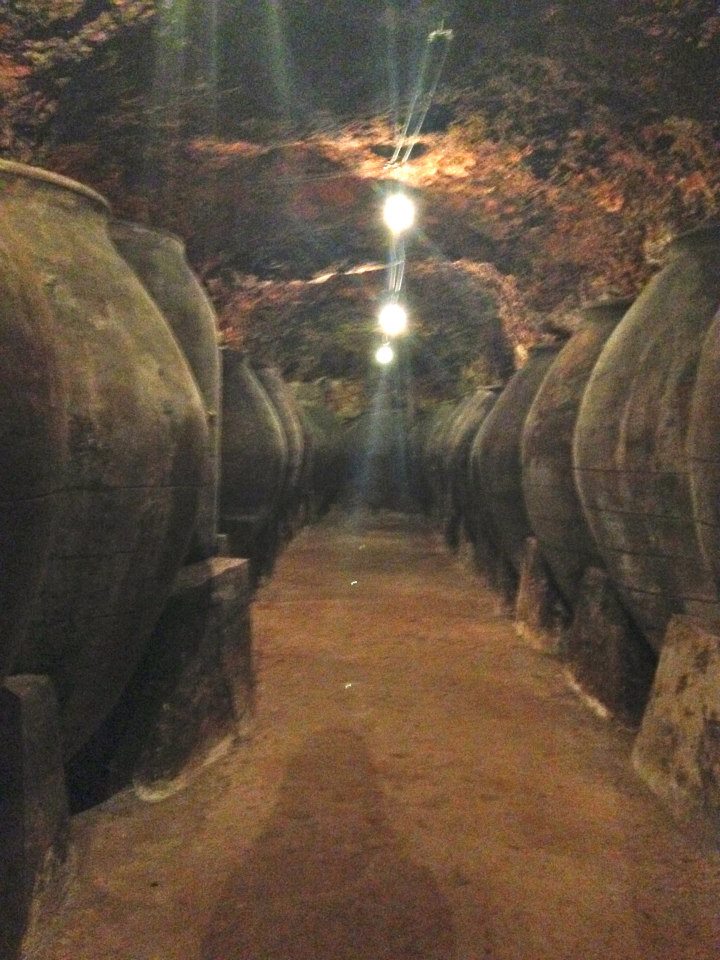
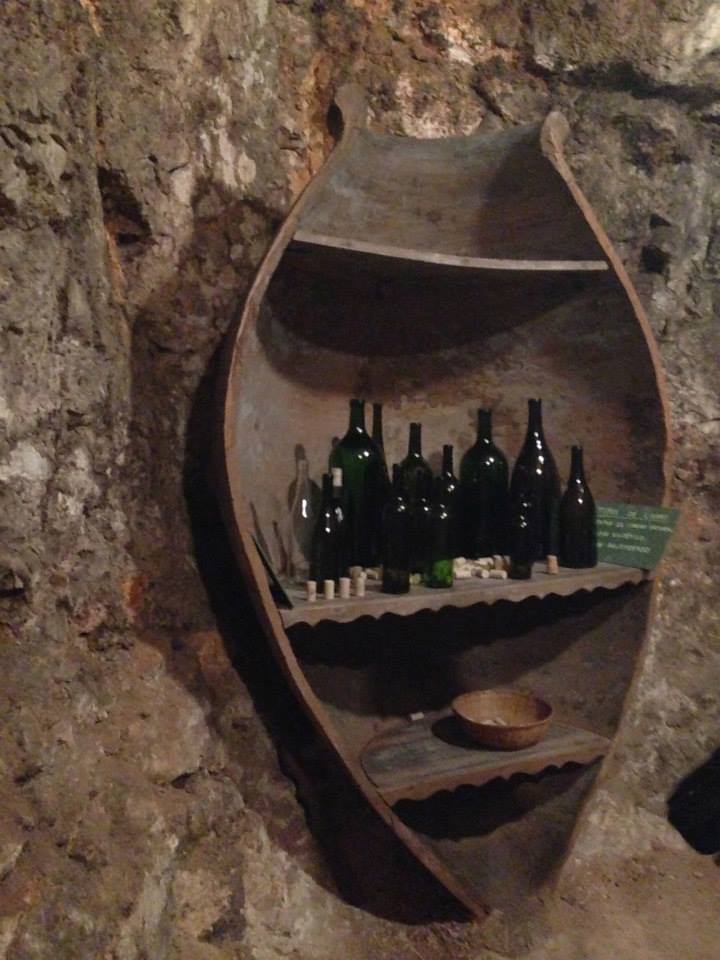
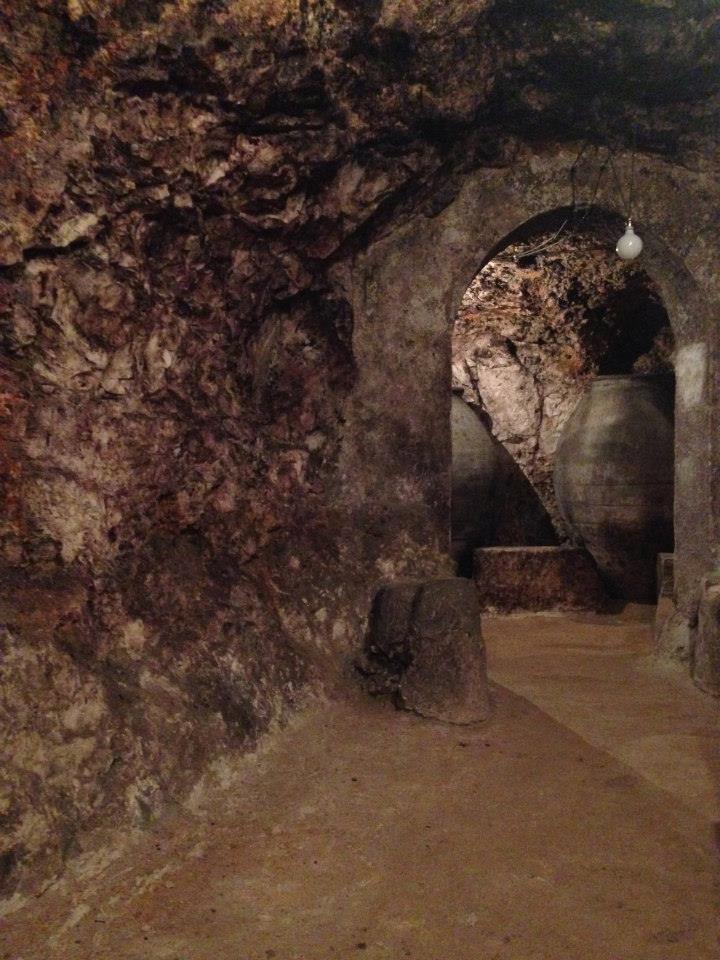
Why You Definitely Should NOT Try to Re-Create These Tours on Your Own
Now you may be thinking, oh I have the stops, why don’t I do these myself?
I’m here to tell you that you will not have the same experience, or even close to it.
Plus, you may not be able to get in. Especially on the stops for Nicky’s tour. We were literally the only ones at the vineyard. In one case, the winemaker left the keys and just said lock up when you’re done. We were insanely impressed by the trust she’s developed with these teams! It allows you access to a world you wouldn’t see on your own.
Meeting the people who have cultivated this golden elixir for generations is a way to explore the ethos of this remarkable country. These tours, or any of the Spanish wine tours these companies offer, will provide you with a unique perspective, stories, and a newfound appreciation for wine and the people that make it that you simply wouldn’t get on your own. So, try them out and let me know what knowledge you pick up along the way. Salud!
Book a wine tour with Nikki in Andalusia here or a Madrid wine tour here!

